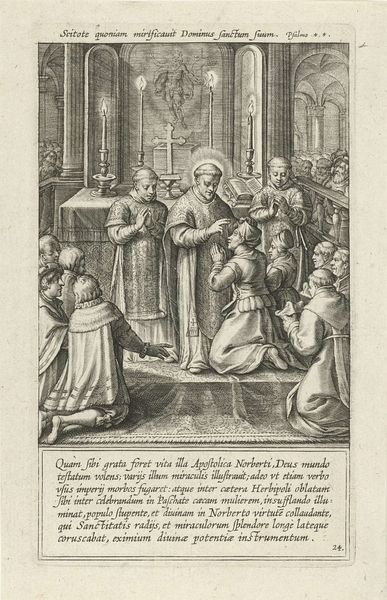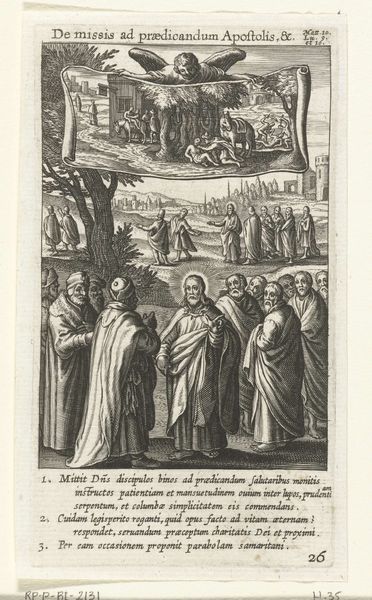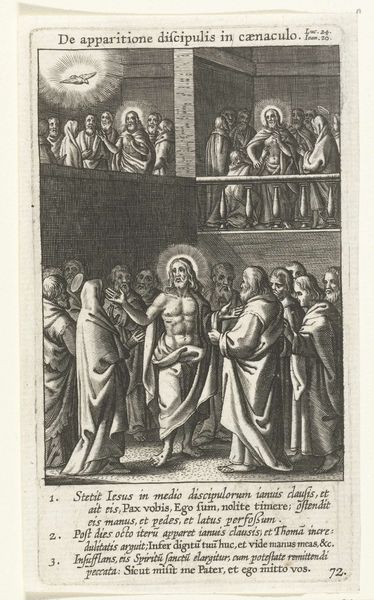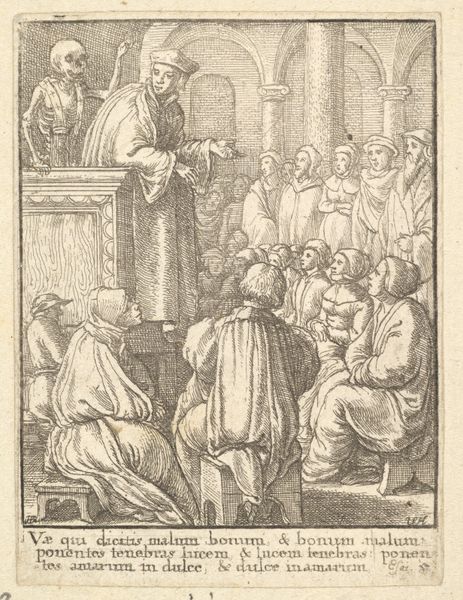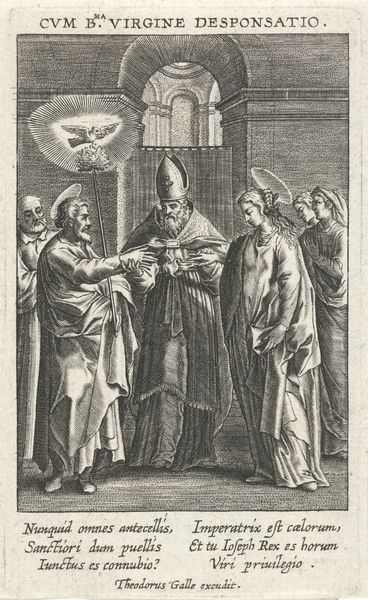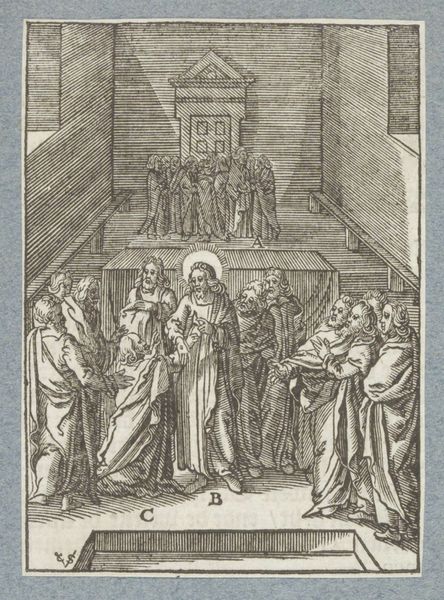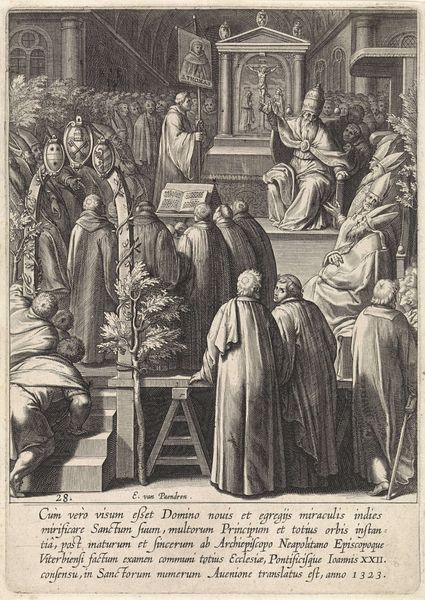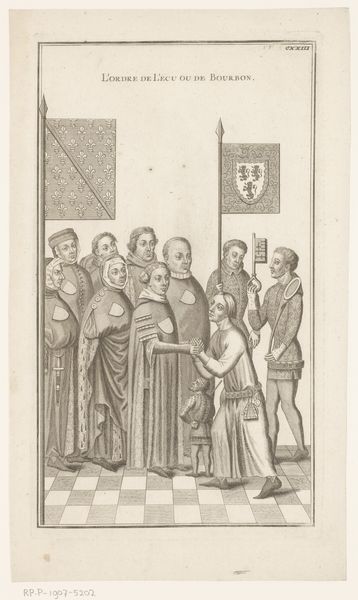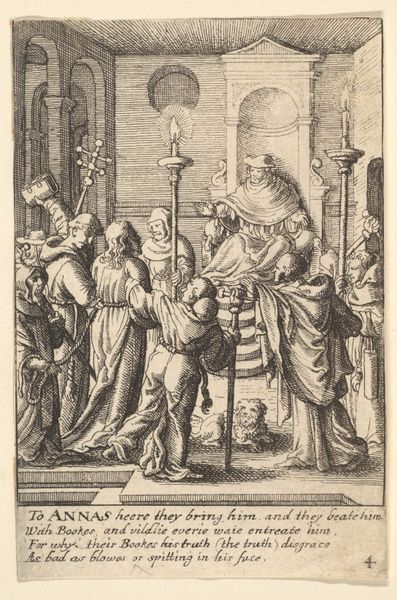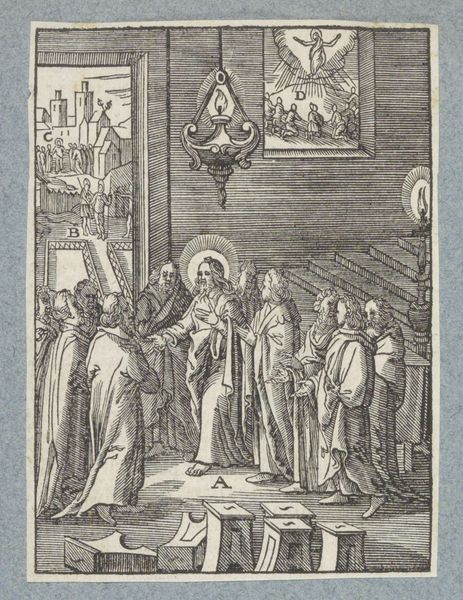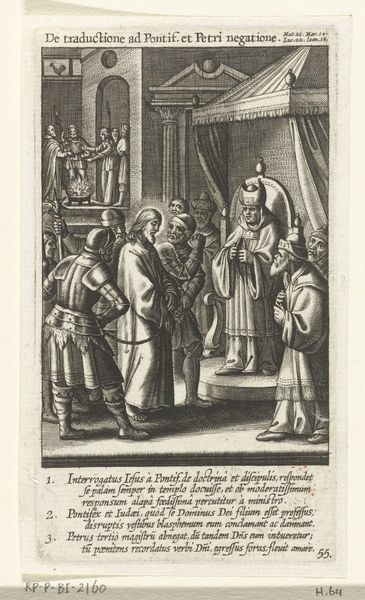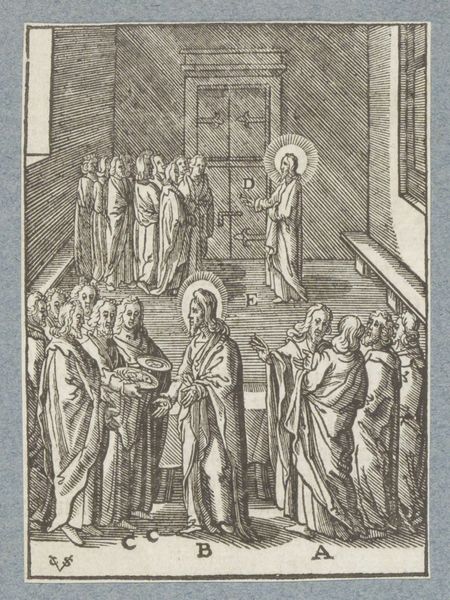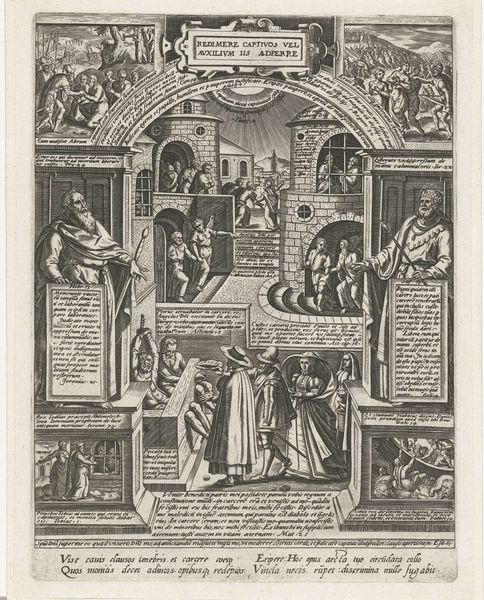
print, engraving
#
portrait
#
allegory
# print
#
figuration
#
11_renaissance
#
line
#
history-painting
#
northern-renaissance
#
engraving
Dimensions: height 252 mm, width 209 mm, height 304 mm, width 246 mm
Copyright: Rijks Museum: Open Domain
Lambertus Suavius created this engraving, "The Righteous Ruler (Allegory on Good Governance)," in the 16th century. The print reflects the political and social anxieties of the time, a period marked by religious conflict and the rise of powerful monarchies. Here, the ruler is depicted as a figure of solemn authority, surrounded by advisors, embodying an ideal of just leadership. Yet, this image also subtly conveys the complexities of power. The ruler's posture, with hands clasped on a scepter, suggests both control and a certain burden of responsibility. Consider the emotional weight of this image during the Reformation. Suavius, like many artists, navigated a world where religious and political ideologies clashed. Allegories like this served not only to instruct but also to reflect a longing for stability and moral clarity in times of upheaval. The artist uses the print to ask: What does it mean to be just, and who truly benefits from good governance?
Comments
No comments
Be the first to comment and join the conversation on the ultimate creative platform.
